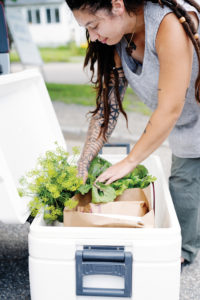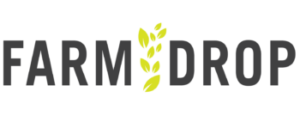Weekly Order and Distribution Logistics
Learn how to set up your automated order and distribution cycle.
Status
- The first thing you will need to do is adjust your Market Hub Status to turn your store ON.
- Unless other arrangements are made specifically and specified in the MOU FarmDrop Market Hub Managers sign with FarmDrop L3C, all market hubs are expected to be open 50 weeks a year.
- Enabling / Disabling the market hub Status is therefore something that gets done at launch, and during a two week break period, generally in late winter, early Spring.
Agenda
- The agenda that you set here will be reflected in the Schedule and Market Info areas of the front end, and your store will automatically Open and Close based on your customized time entries, sending automated emails to customers.
- You will want to confirm the schedule that works best for your market hub with your producers before onboarding.
- This section can get filled out during your Live Demo with a FarmDrop team member, so we can guide you along
- Generally, unless you are an online farmstand, which tends to use same day pickup, you will NOT click on Always Open.
- You can set your Open/Close online shopping and the producer Drop-Off, customer Pickup, and Home Delivery distribution logistics, which will be the same every week. Remember, consistency is key to success.
- If you want to add different time windows for scheduling, or different days for pickup you can add Pickup Locations.
 Pickup Locations
Pickup Locations
While organizing your producers, and engaging your customers, you will simultaneously want to be thinking about your Market Hub main location. This will be the location where all of your Producers will drop off products and where your first set of Customers will pick up orders.
There are some important things to consider when choosing a Market Hub main location:
- Does it offer a good value proposition to customers in terms of access to the FarmDrop service and products?
- Is it easily accessible for customers and producers? Is there parking?
- Do you have room for tables, coolers, space to receive bulk products and then re-organize into personal Customer bags?
- Will you be able to store items you will need weekly: bags, tables, trash bin, masks, etc?
- Is there space for ample signage outside and inside?
- Can you use existing infrastructure, have cold storage installed (refrigeration or freezer)?
The following are some preliminary instructions in case you find yourself setting up your market hub agenda:
- Click the status of a pickup location as On, by checking the box at the top of the frame.
- Specify the details of where and how your customers are going to be picking up: pickup location’s name, address, time frame, contact email and phone number are all important.
- Some locations can have just one pickup, while others might expand to ten. It is specific to each market hub what model is best. In the market hub back end there needs to be at least on pick-up location address, contact information and pick-up times, which will then show up in the Schedule, Market Info, and in customer order confirmation emails.
- A pickup location must be specified for customers before launching the site, if the pickup location is not owned by the market hub manager then additional MOUs need to be issued.
- An automatic pickup fee of $5 for that main pickup location is applied automatically at checkout and goes to the market hub managers connected Stripe account in the form of a net $4.50, so there is no need to add a pickup fee.
- For subsequent pickup locations an additional pickup fee may apply (between $3 – $5). This pickup fee also goes to the market hub manager’s Stripe and helps cover the logistics of engaging farmers to transport orders to other pickups.
- Each pick up location may determine their acceptance of EBT /SNAP Pay Later (at pickup) but the market hub has to Enable EBT / SNAP Pay Later under Status for the system to work. Other instructions are available for this later on.
Once you have established your main Market Hub location, if you own this space, you will only need to sign the MHM MOU with FarmDrop. For any 3rd party pickup locations, or for every new additional pickup location where you do not personally own the space, a separate MOU will need to be signed by all parties:
- MOU Template_Market Hub Manager<>FarmDrop
- MOU Template_Pickup Location<>Market Hub Manager<> FarmDrop
We will also need your General Liability and that of the pickup locations you work with in order to approve the pickup.
Customized Emails and Banners (Marketing Automations)
- Open & Close Market times that you set trigger automated emails which can be customized in your back end. For example an email announcing your Market Hub is Open goes out at the exact time that you set as Open. On the other hand the Reminder to Order email goes out at 9am on the day that you Close. For Always Open, no emails get sent. It is important to note that Active Campaign is your Email Marketing tool that we require you use, and typically we recommend that you send two emails a week, promoting the market hub’s producers, products, stories and recipes.

- Open, Pickup (& Delivery) Reminder Emails are able to be customized and automatically sent to customers if turned on (MHMs need to let FarmDrop HQ know which emails they want on, and then those can become customized by MHMs)
- Other marketing automations are also available through the front end account for customers, such as a Re-Order through a customers account or emails that get sent out, as well as Abandoned cart emails.
- Banners are a text box that lives at the top of the market hub for customers to get special announcements, and are turned on for Close (red) and Open (green) and if not customized there is a short message that lets customers know if the store is closed or open. Banners can be customized, and although we recommend they don’t be long, you can add important messages (like weather protocols), pickup or delivery details, or even customer survey links.
> Guide to Setting Up the Market Hub Manager Dashboard > save for when you are ready!
